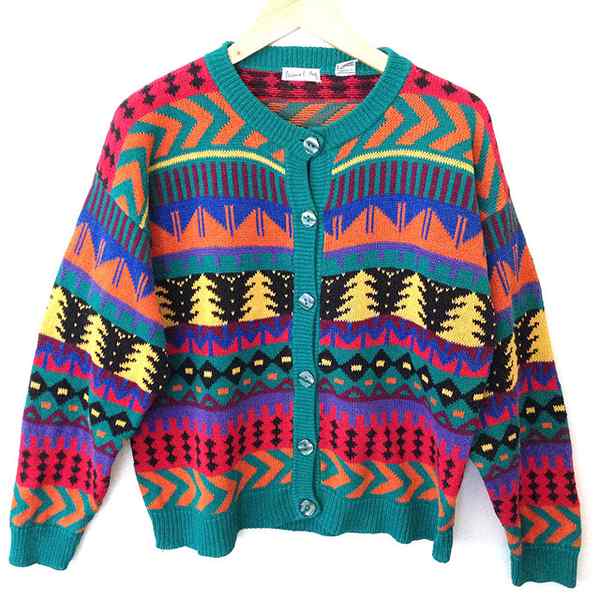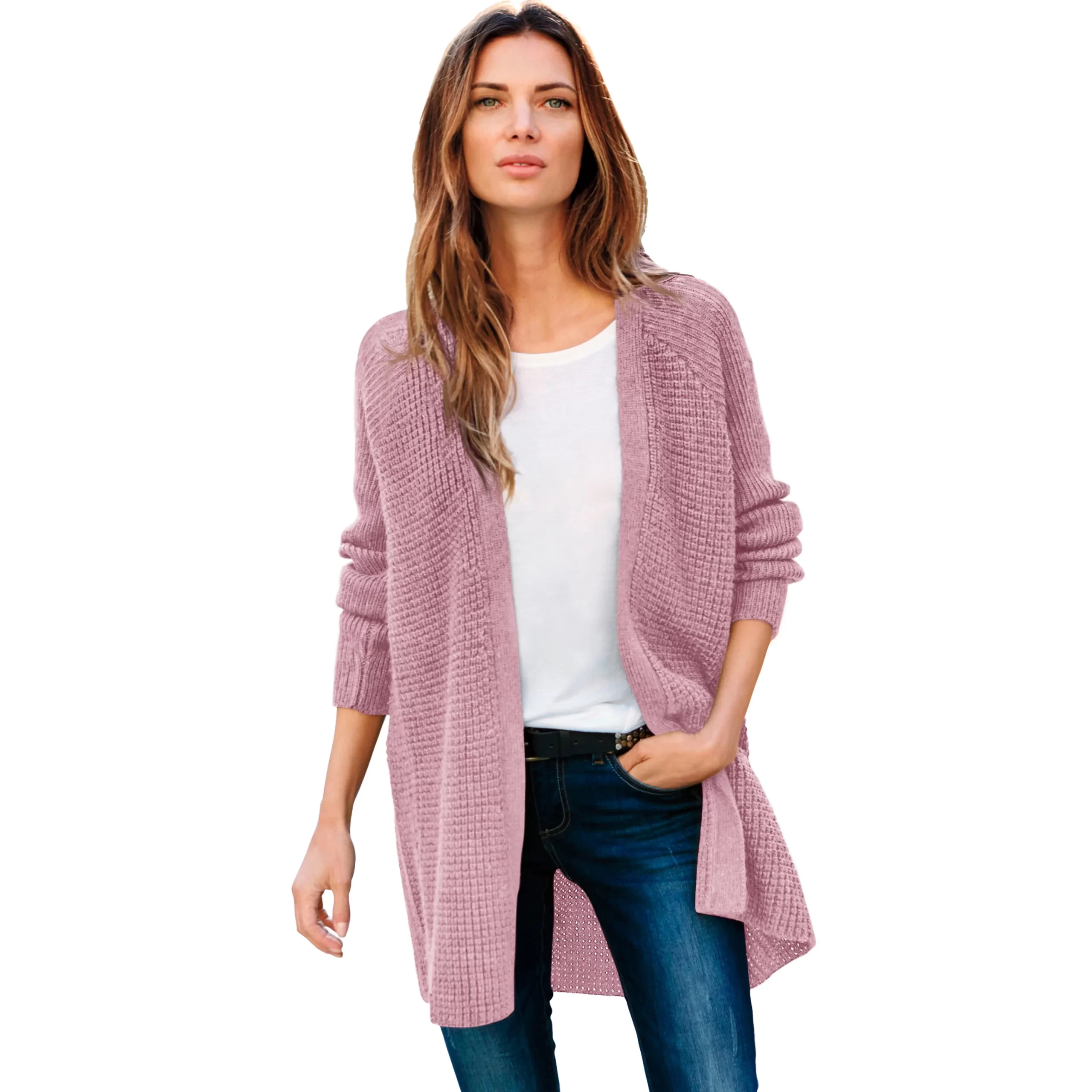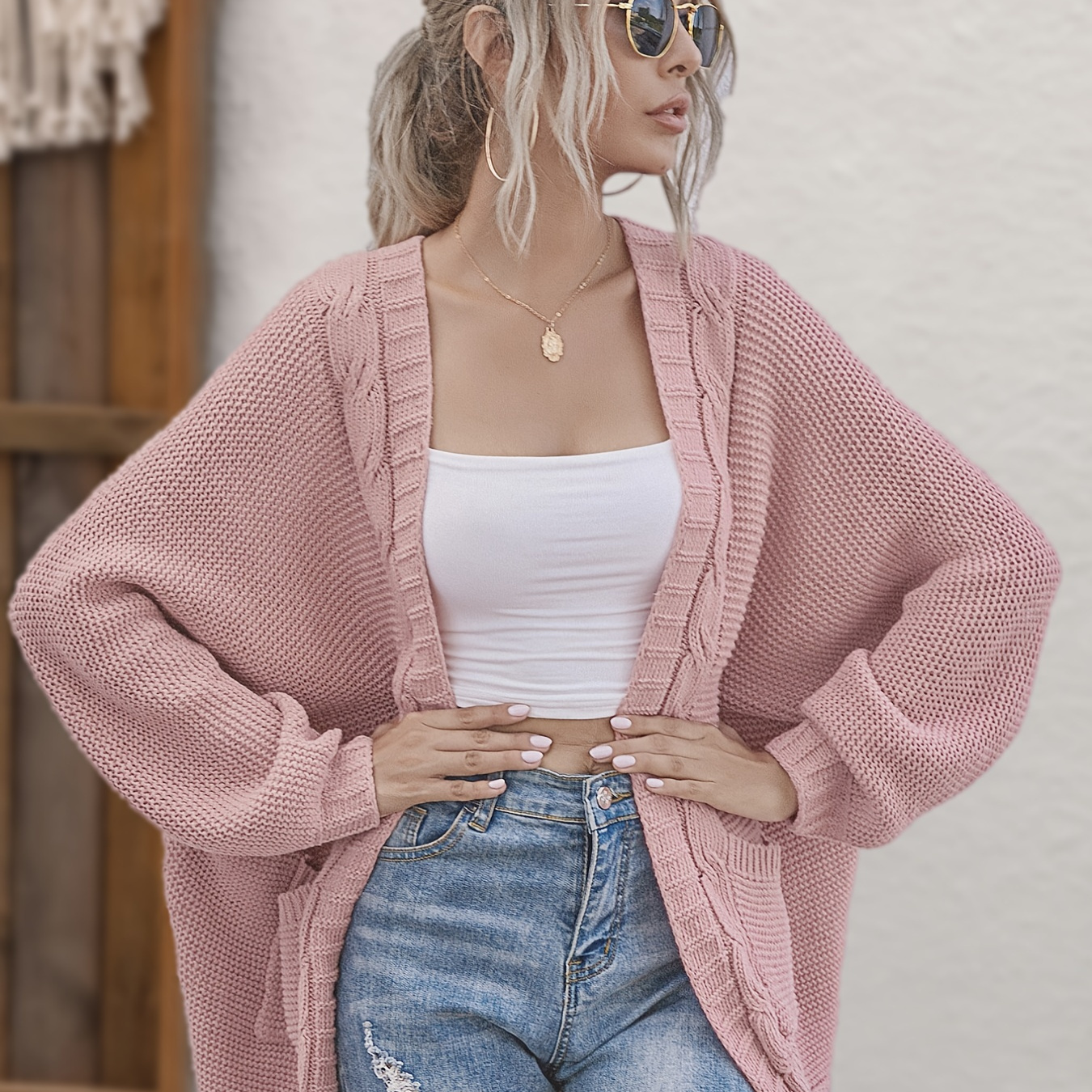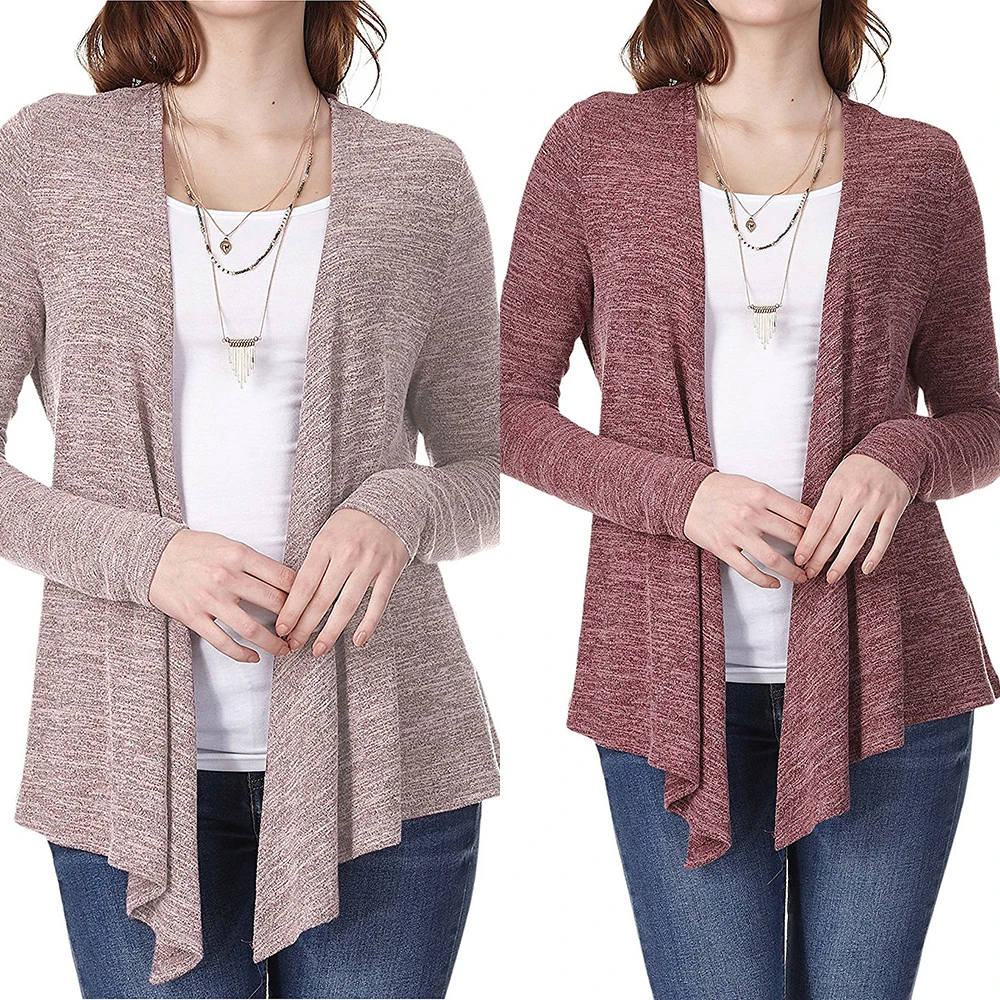Understanding the difference between cardigan and sweater can significantly enhance your wardrobe choices and elevate your style. Both pieces are essential in any closet, offering warmth and versatility. However, recognizing their distinct features allows you to select the perfect garment for any occasion. This comprehensive guide delves into the nuances that set cardigans and sweaters apart, providing insights into their styles, uses, and how to style them effectively.
 Defining Cardigans and Sweaters
Defining Cardigans and Sweaters
Before diving into their differences, it’s essential to define what cardigans and sweaters are and their roles in fashion.
What is a Cardigan?
A cardigan is a type of sweater that opens at the front. It usually features buttons or a zipper, allowing it to be easily put on or taken off. Cardigans come in different lengths and styles, from lightweight to chunky, making them adaptable to various temperatures and outfits. Their open-front design adds a layer of versatility, distinguishing them from traditional pull-over sweaters.
Structural Differences
Open vs. Closed Front
The most noticeable difference between cardigan and sweater is the front opening.
Cardigans feature an open front, often secured with buttons, zippers, or ties. This design allows for easy layering over other garments, such as shirts and blouses.
Sweaters, on the other hand, typically have a closed front with no openings. They are worn by pulling them over the head, providing a snug fit around the torso.
Sleeve Styles and Necklines
Both cardigans and sweaters offer a variety of sleeve styles and necklines, but their designs often differ.
Cardigans may have different sleeve lengths, including long sleeves, three-quarter sleeves, or even sleeveless options. They can feature various necklines, such as V-necks, crew necks, or shawl collars, adding to their versatility.
Sweaters also come in numerous sleeve styles, but their necklines are usually fixed, such as crew necks, V-necks, turtlenecks, or mock necks. The neckline choice often complements the overall style of the sweater, whether it’s casual or more formal.
 Material and Fabric
Material and Fabric
The materials used in cardigans and sweaters contribute to their distinct appearances and functionalities.
Wool vs. Cotton vs. Synthetic Fibers
Both cardigans and sweaters can be made from a wide range of materials, each offering different benefits.
Wool is a popular choice for both garments due to its excellent insulation properties. It keeps you warm in cold weather and can be lightweight for layering.
Cotton is favored for its breathability and softness, making it ideal for warmer climates or layering in transitional seasons.
Synthetic fibers like polyester and acrylic are often used for their durability, moisture-wicking properties, and ease of care. They are also less expensive, making both cardigans and sweaters accessible for various budgets.
Blended Fabrics
Blended fabrics combine natural and synthetic fibers to enhance the qualities of both materials. For example, a wool-polyester blend offers the warmth of wool with the durability and wrinkle resistance of polyester. These blends are common in both cardigans and sweaters, providing a balance between comfort and functionality.
Styling Differences
How you style a cardigan versus a sweater can vary based on the garment’s features and the look you aim to achieve.
Layering and Versatility
Cardigans excel in layering. Their open-front design makes them perfect for draping over t-shirts, blouses, or dresses. You can easily adjust the cardigan to reveal or conceal the layers underneath, providing flexibility for different weather conditions and styles.
Sweaters are typically worn as standalone pieces or as the base layer. They provide a clean, streamlined look, making them suitable for both casual and professional settings. Sweaters can be paired with jeans, skirts, or trousers for a polished appearance.
Formal vs. Casual Looks
Cardigans can easily transition from casual to formal. A lightweight cardigan can be worn over a casual dress for a laid-back look or paired with tailored trousers and a blouse for a more sophisticated ensemble.
Sweaters also offer versatility but tend to lean slightly more towards casual or business-casual styles, depending on the design. Chunky sweaters are perfect for cozy, informal outfits, while fine-knit sweaters can be dressed up for office wear or elegant occasions.
Functional Differences
Beyond their aesthetic differences, cardigans and sweaters serve different functional purposes.
Ease of Use
Cardigans are easier to put on and take off due to their open-front design. This makes them ideal for fluctuating temperatures, allowing you to adjust your layers without fully removing the garment.
Sweaters require more effort to change because they must be pulled over the head. This can be less convenient in situations where you need to quickly adjust your warmth.
Temperature Regulation
Cardigans offer better temperature regulation because they can be easily layered over other clothing. You can add or remove the cardigan as needed, providing adaptability to changing climates.
Sweaters provide consistent warmth without the option to adjust layers easily. They are best suited for maintaining a stable level of warmth in cooler environments.
 Occasions and Settings
Occasions and Settings
The choice between a cardigan and a sweater can also depend on the occasion or setting you are dressing for.
Casual Everyday Wear
Both cardigans and sweaters are staples in casual wardrobes. However, cardigans offer more versatility for layering and creating varied outfits, making them a popular choice for everyday wear.
Professional and Office Settings
For professional settings, fine-knit sweaters and tailored cardigans are ideal. They provide a polished and sophisticated look suitable for office environments. Cardigans, in particular, can be easily paired with office attire without compromising on style.
Formal and Evening Events
When attending formal or evening events, both cardigans and sweaters can be styled to fit the occasion. A sleek, fitted sweater can be paired with elegant trousers or a skirt, while a sophisticated cardigan can be worn over a dress with statement accessories to elevate your look.
Choosing the Right Fit
Selecting the right fit is crucial for both cardigans and sweaters to ensure comfort and style.
Sizing and Proportion
Cardigans come in various lengths and fits, from oversized to fitted styles. Choosing the right size depends on how you plan to layer it. An oversized cardigan works well for a cozy, relaxed look, while a fitted cardigan complements more tailored outfits.
Sweaters also vary in fit. Chunky sweaters provide a roomy and comfortable fit, ideal for layering. Slim-fit sweaters offer a more streamlined appearance, suitable for a sleek and modern look.
Body Shape Considerations
Understanding your body shape can help in selecting the most flattering cardigan or sweater.
- Hourglass Shape: Fitted cardigans and sweaters that highlight the waist are ideal.
- Pear Shape: Cardigans with structured shoulders and fitted waists can balance the proportions.
- Apple Shape: Long, open-front cardigans and loose sweaters can create a flattering silhouette.
- Rectangle Shape: Sweaters with added details like embellishments or belts can add dimension to the body.
 Care and Maintenance
Care and Maintenance
Proper care ensures that your cardigans and sweaters remain in good condition for longer.
Washing Instructions
Both cardigans and sweaters often require gentle washing to preserve their fabric and shape.
- Hand Washing: This method is recommended for delicate fabrics. Use mild detergent and lukewarm water to gently clean the garments.
- Machine Washing: If machine washing is necessary, use a gentle cycle and place the garments in a mesh laundry bag to prevent stretching or damage. Always follow the care label instructions.
Drying Techniques
Proper drying techniques help maintain the integrity of your cardigans and sweaters.
- Air Drying: Lay the garments flat on a clean towel, reshaping them to their original form. Avoid hanging, as this can cause stretching.
- Drying Rack: Use a drying rack in a well-ventilated area to air dry your sweaters and cardigans naturally.
Storage Tips
Storing your cardigans and sweaters correctly prevents damage and keeps them looking their best.
- Folding vs. Hanging: Fold sweaters and cardigans to avoid stretching the shoulders. Use shelves or drawers instead of hanging them in the closet.
- Avoid Moth Damage: Store garments in breathable bags or containers with natural repellents like cedar blocks to protect against moths and other pests.
Fashion Trends and Innovations
Staying updated with the latest trends can help you choose cardigans and sweaters that are both stylish and modern.
Contemporary Styles
Modern cardigans and sweaters come in a variety of styles, colors, and patterns to suit different tastes and preferences.
- Chunky Knits: Thick, chunky cardigans and sweaters provide a cozy and fashionable look, perfect for layering in colder months.
- Cable Knits: Classic cable-knit patterns add texture and visual interest to both cardigans and sweaters.
- Oversized Fits: Oversized cardigans offer a relaxed and comfortable fit, while oversized sweaters provide a statement look.
Sustainable Fashion
Eco-friendly materials and sustainable practices are increasingly popular in the fashion industry.
- Natural Fibers: Opt for cardigans and sweaters made from organic cotton, recycled wool, or other sustainable materials to reduce environmental impact.
- Ethical Production: Choose brands that prioritize ethical manufacturing processes and fair labor practices.
Technological Advancements
Innovations in fabric technology enhance the functionality and comfort of cardigans and sweaters.
- Moisture-Wicking Fabrics: These materials keep you dry and comfortable by drawing moisture away from the skin.
- Stretch Fabrics: Incorporating elastane or spandex provides added flexibility and ease of movement in both cardigans and sweaters.
Accessorizing Cardigans and Sweaters
Accessories can transform a simple cardigan or sweater into a stylish ensemble.
Belts and Scarves
Adding belts and scarves can enhance the overall look of your outfit.
- Belts: Cinch a cardigan at the waist with a belt to create a more defined silhouette and add a touch of style.
- Scarves: Pair sweaters with colorful or patterned scarves for added warmth and visual interest.
Jewelry and Hats
Jewelry and hats complement your cardigan or sweater, adding sophistication and flair.
- Jewelry: Layer necklaces or wear statement earrings to elevate a simple sweater.
- Hats: Wear a beanie or fedora with a cardigan for a chic and functional accessory combination.
Footwear and Bags
The right footwear and bags complete your outfit, ensuring both style and practicality.
- Footwear: Pair cardigans with ankle boots for a fashionable look or with sneakers for a casual vibe. Sweaters can be matched with loafers, heels, or boots, depending on the occasion.
- Bags: Choose bags that complement your outfit’s style, such as tote bags for everyday use or clutch bags for evening events.
Versatility in Wardrobe
Both cardigans and sweaters are incredibly versatile, making them essential pieces in any wardrobe.
Seasonal Adaptability
- Spring and Fall: Lightweight cardigans and sweaters are perfect for layering over shirts and dresses during transitional weather.
- Winter: Chunky knit sweaters and heavy cardigans provide extra warmth and insulation in colder months.
Dress Code Flexibility
These garments can adapt to various dress codes, from casual to business formal.
- Casual Settings: Wear a cozy sweater with jeans or a relaxed cardigan over a casual dress for everyday comfort.
- Business Casual: Opt for a tailored cardigan or a fine-knit sweater with trousers or a pencil skirt for a polished office look.
- Formal Occasions: Choose elegant, structured cardigans or sleek sweaters paired with formal attire to enhance your ensemble.
Personal Style Expression
Cardigans and sweaters offer numerous opportunities to express your personal style.
Color Choices
Color plays a significant role in how cardigans and sweaters look and feel.
- Bold Colors: Bright hues such as red, emerald green, and cobalt blue make a statement and can add a pop of color to your wardrobe.
- Pastels: Soft pastel shades provide a delicate and feminine touch, perfect for spring and summer outfits.
Patterns and Textures
Incorporating patterns and textures can add depth and interest to your look.
- Solid Colors: Simple, solid-colored cardigans and sweaters are timeless and easy to mix and match.
- Patterns: Stripes, polka dots, floral prints, and geometric patterns can make your garments stand out.
- Textures: Combining different textures, like ribbed knits or cable patterns, adds visual appeal and tactile interest.
Customization and Personal Touches
Personalizing your cardigans and sweaters can make them unique and reflect your individuality.
- Embellishments: Adding buttons, patches, or embroidery can enhance the design and make your garments one-of-a-kind.
- DIY Alterations: Customize the fit or style of your sweaters and cardigans through DIY alterations, such as shortening the sleeves or tying on details.
Practical Tips for Choosing Between Cardigans and Sweaters
When deciding between a cardigan and a sweater, consider the following practical aspects to make the best choice for your needs.
Purpose and Functionality
Think about how and where you plan to wear the garment.
- Layering Needs: If you need a versatile layer for varying temperatures, a cardigan is an excellent choice due to its open-front design.
- Standalone Warmth: If you prefer a single, reliable layer for consistent warmth, a sweater is more suitable.
Lifestyle and Activity Level
Your lifestyle and daily activities influence your choice between a cardigan and a sweater.
- Active Lifestyles: A lightweight cardigan offers flexibility and ease of movement, ideal for active days.
- Office Environments: A fine-knit sweater provides a polished and professional appearance, suitable for office settings.
Climate Considerations
Consider the climate you live in when selecting between a cardigan and a sweater.
- Cold Climates: Opt for thick, insulated sweaters and heavy cardigans to keep warm in frigid temperatures.
- Mild Climates: Choose lighter sweaters and cardigans that provide just enough warmth without overheating.
 Conclusion
Conclusion
The difference between cardigan and sweater lies in their structure, style, and functionality. While both are indispensable in any wardrobe, understanding their unique features allows you to make informed fashion choices. Cardigans offer versatility and ease of layering, making them perfect for adaptable dressing across seasons and occasions. Sweaters provide consistent warmth and a streamlined appearance, suitable for both casual and professional settings. Embrace the distinct qualities of cardigans and sweaters to create a diverse and stylish wardrobe that meets all your fashion needs.